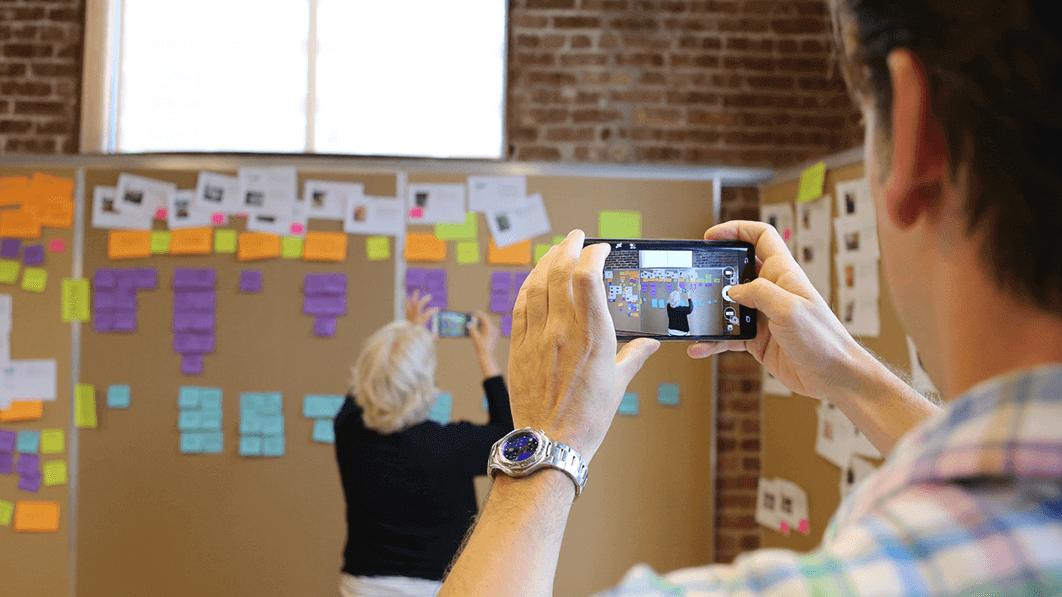How to Improve Customer Experience Research by Understanding Your Users
How people talk about what they do is a small slice of what they actually do. Learn to examine a bigger picture of your customer experience with this approach.
June 1, 2016
What people say and what they do are two very different things. It’s not that people are dishonest or overly forgetful. It’s just that what you experience is so much richer in detail and nuance that you could ever describe.
Let’s take a peek into a recent focus group — one that targeted behavior rather than opinion.
Moderator: Thank you everyone for participating in our group today. And thanks for bringing your strollers. Let’s get started. Dave, could you tell us about your baby stroller?
Participant (Dave): Sure, I love it — the look, the features, everything. I did a lot of research and I know this Peg Perego is highly recommended. It cost an arm and a leg, but you get what you pay for. I am really happy with it.
M: Awesome, thanks for sharing.
All of you said you transport your stroller in your SUV. We have a compartment set up here that should be more or less like the back of your vehicle. What I’d like you to do is show us how you get your child settled, fold the stroller, and put it in your car. Dave, maybe you can show us first. Here, use this doll as your child.
D: OK, so you want me to pretend like I’m at the store or some parking lot with my child and getting ready to go home?
M: Yep!
D: OK, so … what I do is roll the stroller over to the car … and usually I find myself in the wrong position like this … because I push the stroller past the door, and then I can’t open it. I’m between two cars, usually. So, here, let me turn it around.
Stroller tips up and to the side, getting caught on the turning wheel.
M: Whoa, careful! You don’t want your kid falling out!
D: Yeah, well, my kid is always buckled in … usually. I mean, sometimes I can’t get the three buckles together in the way they want you to do it, but I get along.
So, now, after getting my child in the car, I take it around to the back to load it. But first, I have to remove anything I have in this one pocket — because I’ve learned it won’t fold when something is in there.
OK, now to fold it. Let’s see. I can never remember which lever I’m supposed to pull first. Ouch! Geez. I always pinch myself on this one.
Users never talk about their entire experience.
Dave is not unlike your customer. When asked, he has a very high opinion of the products and services he has bought and continues to use.
But, in practice, you can see all the potential ways you could improve Dave’s experience through better design.
This is particularly true of activities that are performed more unconsciously. When people get used to doing something, they become used to making accommodations to get around pain points in the experience.
And when those accommodations become habit, they stop feeling like pain points.
You know that feeling when you’re driving on the highway and come upon a freshly paved stretch of road? It’s a feeling of relief! Suddenly the ride is quiet and smooth. You hadn’t even realized that the road was bumpy and noisy before.
That’s exactly what your customers go through. We all get accustomed to the noise and bumps in the road. So we forget to mention them when asked.

Learn more by testing for behavior.
What your customers say about their experience is a tiny fraction of what they actually experience.
It doesn’t matter if you make products, provide a service, or have an online business. The same principle applies.
If you’re looking for insight and to deepen your understanding of your customers, you need to find ways to observe how they behave while using your product or service.
Understanding your customer’s experience is core to creating and delivering great products and services. Grounding yourself in your customer’s current experience illuminates opportunities to create new value for them.
There are countless ways to learn about your user’s experience. So it’s important to know what you’ll get out of using different methods.
Some research methods will tell you how people feel — what they think about a product or service. Other methods will give you the opportunity to observe how users actually behave.
One of these is significantly more valuable than the other.

Get started by observing what people do.
The next time you’re evaluating your customer experience, double-check to see if you’re measuring what people are saying or what people are doing.
Measuring behavior will reveal a fuller picture of the customer experience. Especially for activities that people are used to performing.
You’ll know you’re on the right track if …
You’re doing more observing than listening.
What people do reveals more than what people say.
You’re thinking of new questions to ask throughout the observation.
Watching customers in action always brings up new considerations you hadn’t thought to ask about previously.
People are moving and engaging with your product or competing products.
Nothing’s better than seeing your product or service in action. If you’re in the business of making something entirely new, simulate the experience with a micro pilot.
You’re observing people doing things that are “automatic.”
Observation isn’t a catch-all research technique. It’s always helpful to supplement it with talking to users. But observing people doing things that they’re very used to will be incredibly more revealing than listening to them speak about it.
Try observational interviewing for yourself.



